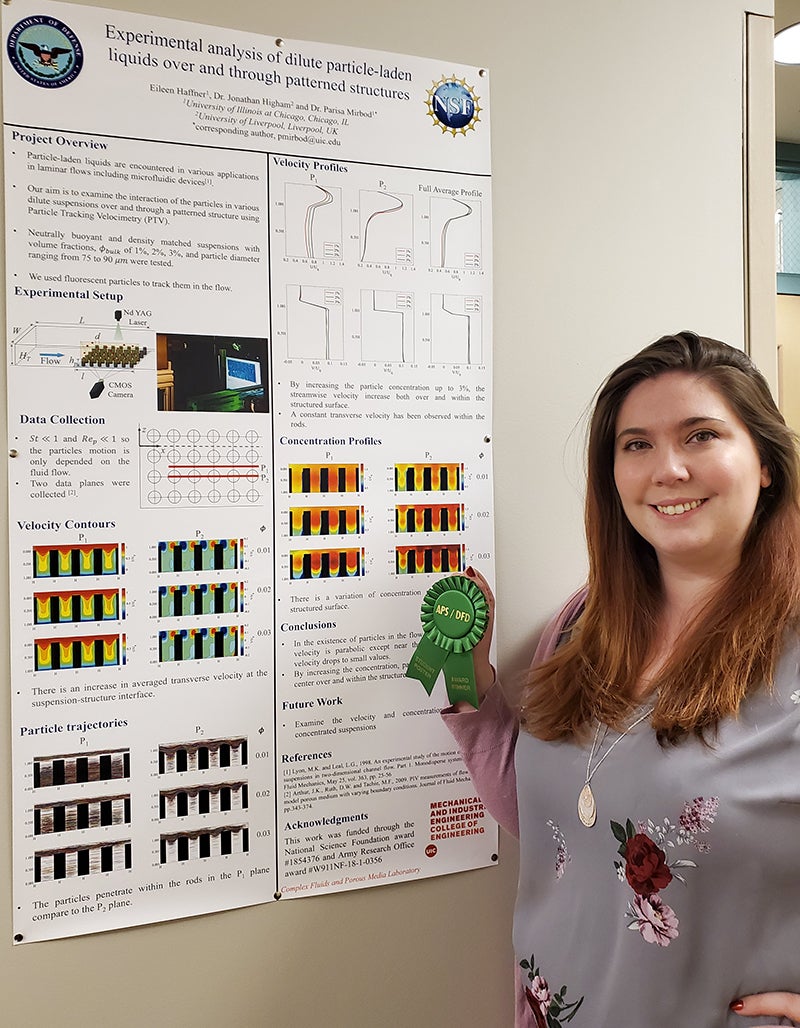MIE graduate student nabs second place at American Physical Society conference

Eileen Haffner, a PhD candidate in mechanical and industrial engineering at the University of Illinois Chicago, won second place for best experiment during the 72nd annual meeting of the American Physical Society’s Division of Fluid Dynamics (DFD) conference in Seattle.
“I was very surprised,” said Haffner, who is slated to graduate in December and works under the direction of MIE Associate Professor Parisa Mirbod. “I wasn’t able to stay for the poster competition itself, so I was boarding a plane when my adviser texted me that we won. We had spent a long time working with our collaborator to come up with a way to test concentration in our experimental set up, so I was really happy that the experiment we came up with got praise from other researchers at APS.”
The annual meeting is one of the largest conferences in fluid dynamics, with more than 3,000 attendees from around the world. The objective is to promote the advancement and dissemination of knowledge in all areas of fluid dynamics. Undergraduate and graduate students, postdoctoral researchers, university faculty, and researchers across government and industry are encouraged to share the latest developments in the field. The technical program features oral presentations, posters, and videos of fluid flow.
Haffner was up against approximately 173 people in the poster competition. The research presented covered a series of experiments to study the particle trajectories of rigid, spherical particles in a suspension flow over and through a porous media model.
“We currently use an experimental technique, the so-called particle image velocimetry (PIV) to study the velocity profiles of the suspensions through porous media,” she said. “Our research plan was to use the PIV method to track the particles within the fluid as they move through and over a specific porous media model.”
The research is crucial as suspension flows are prevalent in many everyday applications including food processing and pharmaceuticals.
“On the other hand, porous media has applications in many natural networks such as flow over coral reefs, canopies, and even blood flow,” she said. “Both of these systems have been the topic of research separately. However, we focus on the coupling behavior of these two concepts to better understand the integrated flow and characterize the particle interactions with the porous media.”
As she looks forward to graduating in December 2020, Haffner expressed her appreciation for Mirbod and UIC.
“The research here is on the cutting edge of engineering. I feel like any of the engineering departments have research topics spanning a wide range of applications that being a student here would allow to purse any avenue of research that interests them,” she said. “I find all the graduate students I meet have a different back story and career path, so they bring their own unique skills to any research topic.”
Learn more about the research in Dr. Mirbod’s lab at Mirbod Lab.